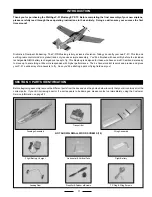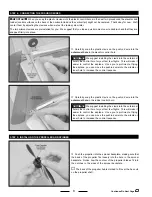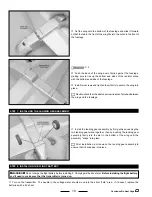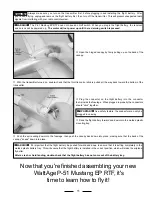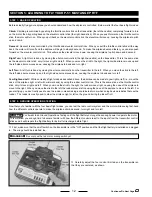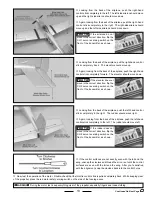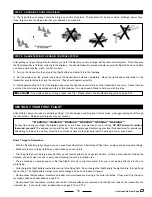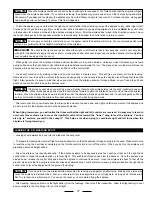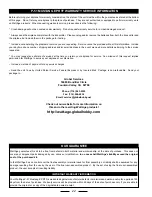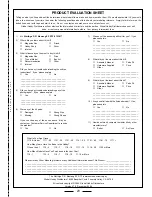
15
STEP 4: RANGE TESTING THE RADIO CONTROL SYSTEM
After getting out to your flying field, but before you fly for the first time, you must range test the radio control system. This will ensure
that the transmitter is "talking" correctly to the airplane. You should follow this procedure before every first flight of the day and after
you have a hard landing, crash, or after a repair.
❑
Turn on the transmitter, then plug in the flight battery and install it into the fuselage.
❑
Set the airplane on the ground and extend the transmitter's antenna completely. Move the right-hand control stick on the
transmitter several times to check the controls. They should operate smoothly.
❑
Walk approximately 75ft. from the airplane and move the right-hand control stick on the transmitter once more. Check to make
sure that the controls are operating smoothly at this distance. You may need a friend to help you with this step.
✦
✦
✦
✦
✦
WARNING
✦
✦
✦
✦
✦
If the airplane does not range check, don't fly! Please refer to the troubleshooting guide on page # 20.
SECTION 7: YOUR FIRST FLIGHT
After all this, I bet you're ready to actually go flying! If you've skipped anything prior to this section, we suggest going back through
the instructions. Doing so will help ensure your success.
Some Things to Remember:
●
With the flight battery fully charged, you can expect anywhere from 4-6 minutes of flight time, so plan your landing accordingly.
●
Make sure that your flying field has no obstructions you can fly into.
●
The flying field should be large enough that you can land anywhere if you get into trouble. Until you are proficient at flying the
airplane, you don't want to have to worry about landing in a small, localized area.
●
There should be no wind during your first few flights; also try to orientate yourself so you're not looking directly into the sun
while flying.
●
Fully charge the flight battery just before coming to the flying field. Do not charge the flight battery the night before, then go flying
the next day. The flight battery will have lost some charge and it won't produce full power.
●
Double-check that the aileron, elevator and rudder control surfaces are moving in the correct direction. If they aren't, flip the servo
reversing switches as described on page # 13.
●
Double-check that the aileron, elevator and rudder control surfaces are centered and that the trim tabs on the transmitter are
centered, too. If not, center them as described on pages # 12 and # 13.
***WARNING***WARNING***WARNING***WARNING***WARNING***WARNING***
If at any time during your flight, the airplane gets stuck up in a tree, in power lines or on a roof top,
DO NOT attempt to retrieve
the model yourself.
The airplane is not worth the risk. We strongly suggest contacting your local fire department for assistance.
Attempting to retrieve the model yourself in any of these cases could potentially result in extreme harm or even death.
❑
The flying field you choose should be a large, open field with grass. There should not be any vehicles, buildings, power lines,
trees, large rocks or anything else that your airplane can crash into.
STEP 3: CHOOSING YOUR FLYING FIELD
Continued On Next Page
☛
☛
☛
☛
☛
Summary of Contents for P-51 MUSTANG EP RTF
Page 21: ...21...



